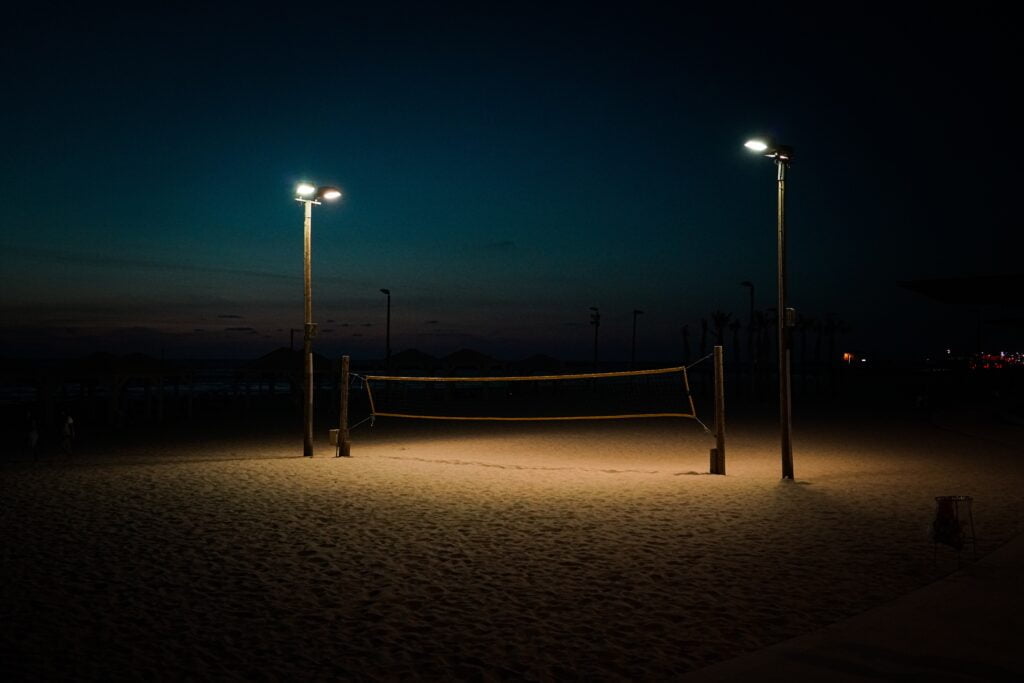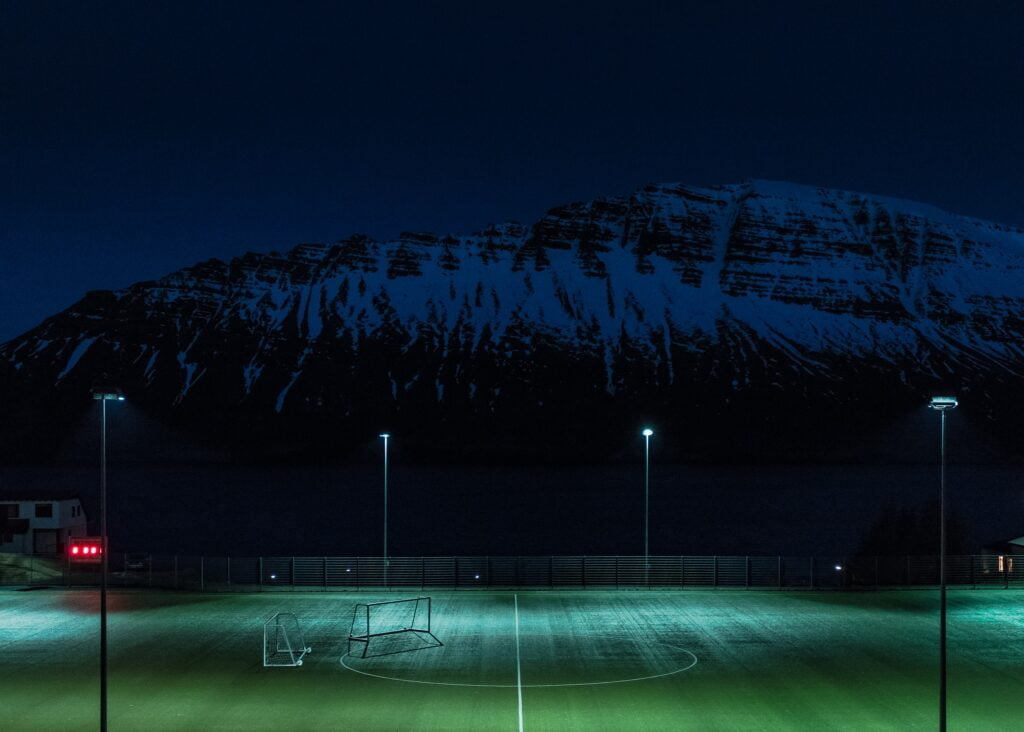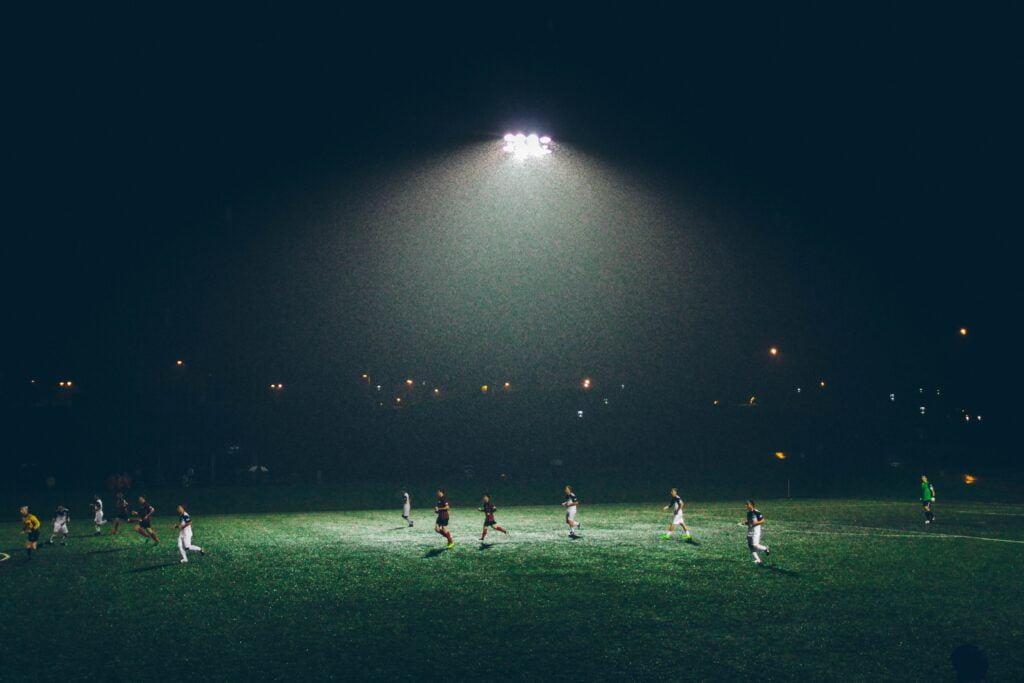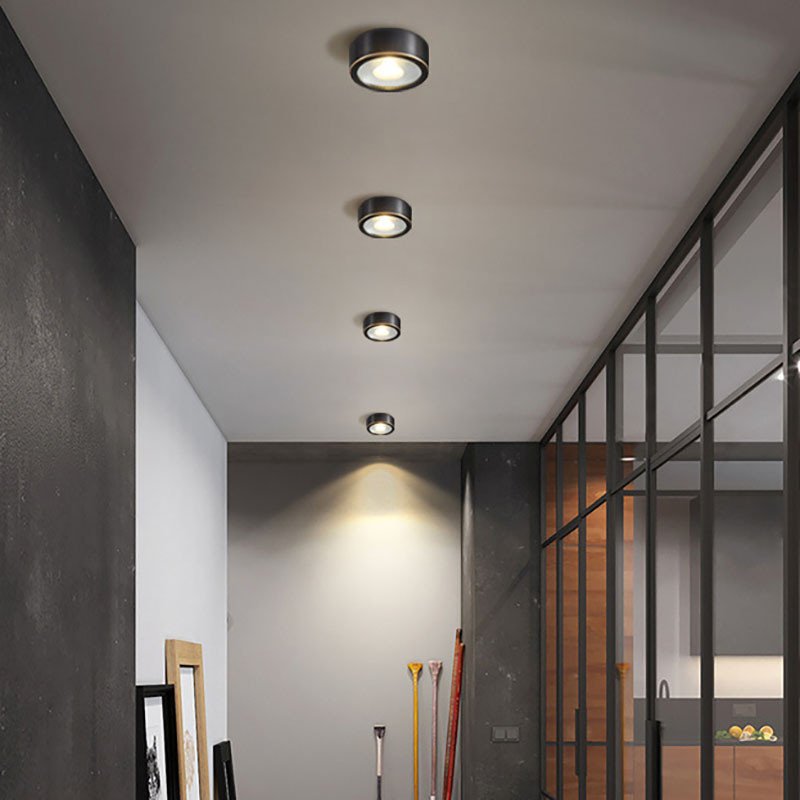Comparing Floodlight vs. Spotlight vs. Downlight: Key Differences Explained
Table of Contents
When planning or revamping a section of your property, the decision on lighting often comes last. However, its significance in shaping the ambiance cannot be underestimated.
In the modern lighting landscape, spotlights, floodlights, and downlights emerge as popular choices. But how do they differ?
The distinction lies mainly in their names. Spotlights emit a focused beam, floodlights spread light over expansive areas, and downlights offer a range yet always project light downward. Your selection can profoundly influence the mood and functionality of a space. Thus, making the right choice is crucial!
If you’re torn between spotlights, downlights, or floodlights for your upcoming endeavor, dive into this article.
We’ll delve into their characteristics, applications, and ideal placements within your home.

Understanding Floodlights, Spotlights, and Downlights
Having chosen LEDs, the subsequent decision is about their specific type. Let’s delve into the details.
Explaining Spotlights
Spotlights offer a focused beam of light, emitting a narrow, adjustable, and directionally versatile cone.
The beam from the spotlights is about 45 degrees wide, lending itself to precise control. This trait makes them favorites in stage lighting, perfectly accentuating the main attraction.
Spotlights come with mounting plates or brackets that affix directly to walls or ceilings and are available in configurations ranging from single to quadruple movable units.
Popular LED spotlight bulbs include GU10s and MR16s. GU10s run at 240 volts—matching mains electricity—thus easily fitting into existing setups. On the other hand, MR16s work at 12 volts, necessitating an external transformer to adjust the mains voltage.

Explaining Floodlights
Floodlights cast an expansive beam of starkly contrasting spotlights, aptly mirroring their name. They’re ideally suited for lighting vast spaces.
Floodlights are robust lighting solutions with a beam spread of approximately 120 degrees, often in outdoor settings. A fun fact: English football clubs have utilized floodlights for pitch illumination since as far back as October 1878, as cited by The Away Section.
Floodlights can illuminate vast spaces with the same wattage and consistent lumen output as spotlights, highlighting their efficiency in LEDs.
An LED floodlight comprises four main elements: a housing, a reflector, a yoke, and a diode. The housing envelops the diode, ensuring light doesn’t scatter aimlessly. Inside the housing, a mirror is placed to optimize the light output. The yoke provides support, suspension, and the capability to rotate the floodlight.

Explaining Downlights
Contrary to the protruding design of spotlights, downlights offer a discreet illumination solution. Typically recessed into architectural elements, only their frontal aspect is visible. This design choice aligns with the sleek aesthetics of contemporary homes.
Downlights boast versatility. They might be flush or recessed, stationary or pivoting, and can exhibit a range of beam widths from narrow to wide.

The different types of LED downlights include:
- Fixed – These emit light directly downward without adjustment capability.
- Tilt – The core of these fixtures can be adjusted, typically up to 20 degrees, to change the beam’s direction.
- Eyeball – This design extends the center for greater adaptability, akin to the tilting variety.
- Wall Washers – These possess an adjustable housing to cast light precisely onto walls or artworks.
Typically, downlights feature a steel or aluminum casing concealed from sight, complemented by an aesthetic fascia. Installation requires creating an opening in the wall or ceiling, after which downlights are secured using springs or compression clips.
Understanding the Core Variations Among Floodlight, Spotlight, and Downlight
The beam spread is at the heart of the distinction among these lighting types. Floodlights deliver a broader beam, spotlights project a narrower one, and downlights offer a balance between the two. Here’s a closer examination of each:
| Characteristics | Floodlight | Spotlight | Downlight |
| Beam Angle | 45-120 degrees | 15-110 degrees | 45 degrees |
| Spread | Wide | Narrow | Narrow |
| Purpose | Generalized Illuminance | Highlighting specific objects | Aesthetics |
Floodlight Applications
Floodlights, known for their broad beam angle, are ideal for illuminating expansive areas, from stadiums to landscapes. Primarily used for ambient lighting, they brighten spaces, setting the tone for other lights to build upon aesthetically. The crux of their utility is to amplify the functionality of an area.
The correct wattage is crucial. Too high, and they can glare and inconvenience users; too low, and the area’s function may be hampered.
Areas where floodlights excel include:
- Manufacturing facilities
- Harbors
- Sports arenas
- Educational settings
- Building exteriors
- Outdoor landscapes
- Retail environments
- Residential garages
Spotlight Applications
Spotlights, with their focused beam, excel in accentuating specific elements. From accenting landscape features, like trees or architectural designs, to stage highlights during performances, their concentrated beam is not designed for general lighting.
Various hues and designs further diversify spotlight use. For instance, a green spotlight might emphasize a garden tree, while miniature versions can accent facade engravings. They’re ideal for:
- Uplighting architectural features
- Creating silhouettes
- Crafting shadows
- Mimicking moonlight effects
- Wall wash lighting
Downlight Uses
Arguably the most versatile downlights cater to diverse needs. They segregate spaces for easy navigation, emphasize specific house sections, and can serve as efficient task lights. Paired with decorative lighting, they can amplify a location’s charm.
Their design variety, from bezel-like trims to flush-mounted Trimless versions, broadens their utility. Depending on the downlight style, they’re perfect for:
- Recessed ceiling lighting
- Focused task illumination
- Artwork highlighting
- Wall-based lighting.
Conclusion
The lighting world commonly features three primary types: spotlights, floodlights, and downlights. Each has a unique beam angle that drives its specific use. Spotlights excel in accentuating objects, floodlights ensure broad luminance, and downlights add aesthetics.
With myriad options available in the market for each type, your choice should align with your lighting aspirations and needs. We trust this article has illuminated these lights’ distinctions and practical uses.
At MyLikeLed, we pride ourselves on crafting top-tier LED strips and LED neon flex. Each product undergoes rigorous quality checks in our state-of-the-art labs. Additionally, we provide tailored solutions for our LED offerings. For unparalleled LED strips and neon flex, reach out to MyLikeLed today!
FAQs
A floodlight spreads light over a wide area, while a spotlight focuses light into a narrow, concentrated beam.
Use a downlight when you want to brighten a room evenly from above, while spotlights are better for highlighting specific objects or areas.
Floodlights are usually designed for outdoor spaces because they cover large areas with bright light, but smaller versions can work indoors for big rooms or halls.
Yes, spotlights can be used for security, especially when you need to focus light on specific entry points or areas you want to monitor.
Floodlights are best for lighting up wide spaces like yards, while spotlights are ideal for highlighting trees, statues, or architectural features.
Downlights can create subtle accent lighting, but for strong highlighting effects, spotlights usually work better.

Hi, I’m Xylia Xiong, a sales professional with 14 years of experience in the LED strip light industry. I specialize in providing tailored solutions, leveraging my expertise in LED products and the latest industry trends. Known for effective communication and problem-solving, I’m dedicated to helping lighting manufacturers, importers, and distributors achieve their goals.
Let’s work together to create customized solutions that exceed expectations.
Related Posts

The Best LED Strip Lights You Can Buy Right Now

Comparing WS2811 Vs WS2812B: Key Differences


